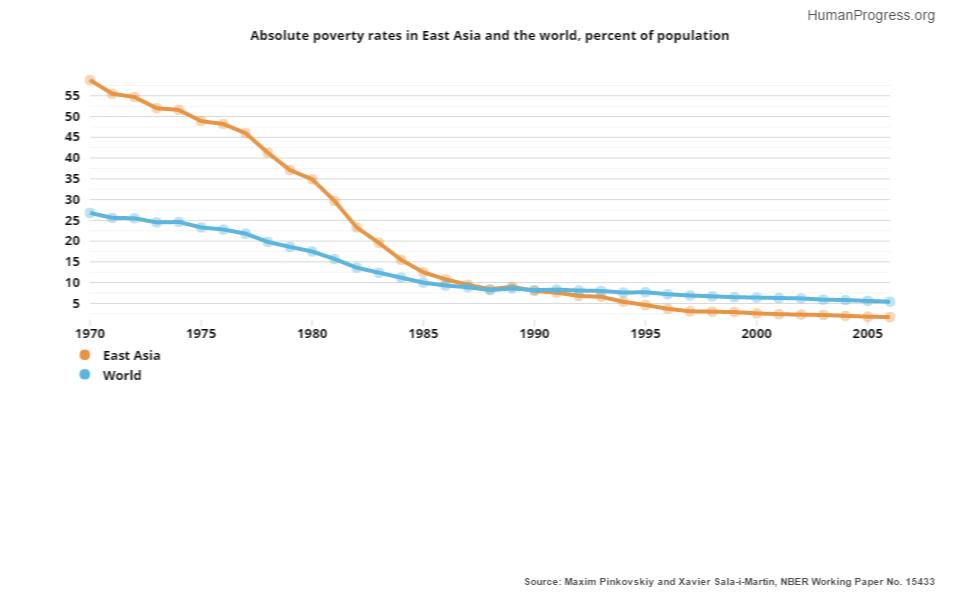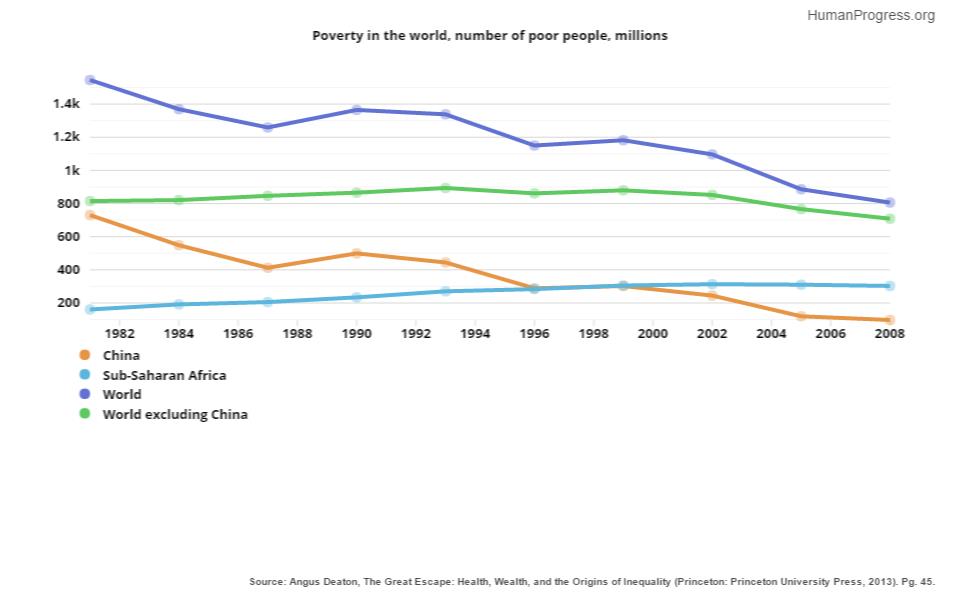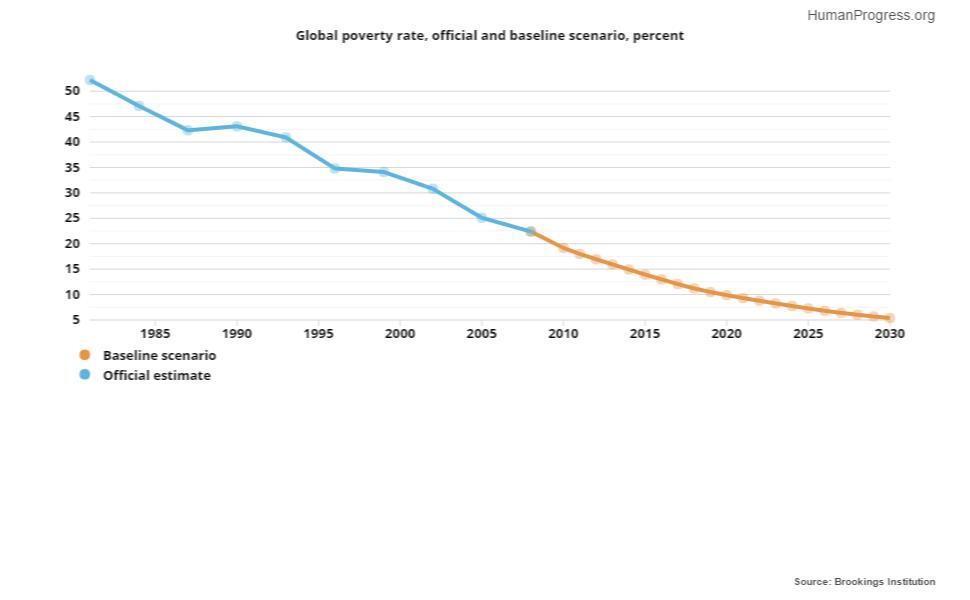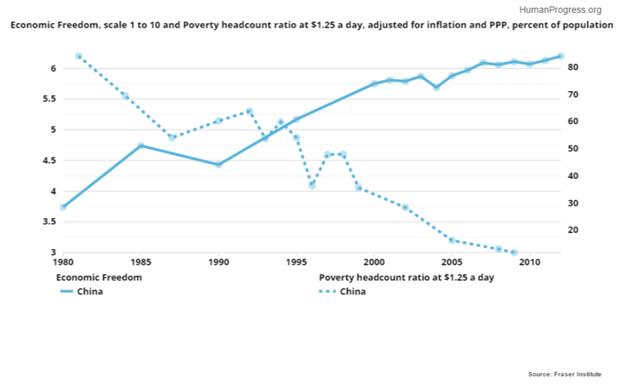Credit to Oxfam’s communications team. Each year, riding on the coattails of the jamboree in Davos, they manage to make a huge splash about global wealth inequality.
And every year, it is pointed that, as Tim Worstall explained on CapX last January, wealth is not some fixed pie. It is usually accumulated through entrepreneurial activity that fulfils wants and needs, enhancing global welfare. Sadly, most readers who pay only a passing interest in the story will miss this nuance and receive claims such as “82 per cent of all wealth created in the last year went to the top 1 per cent” with the shock they are designed to trigger.
Oxfam is, of course, a development charity. Their implicit message, amplified through major broadcasting outlets such as the BBC, is that the wealth of global rich causes the poverty of the poor. But where exactly is the evidence that more interventionist government is the way to reduce global poverty? In fact, recent economic history suggests the opposite: global poverty has plummeted as major countries have liberalised and ceased trying to “manage” their economies in the way Oxfam wants.
It would bad enough if Oxfam’s ideological bias was blinding the organisation to what works in the fight against poverty. But the charity also appears to be playing fast and loose with the facts. Take just one of the claims in their report, subsequently republished on the BBC website. Oxfam makes the astonishing claim that “two-thirds of billionaires’ wealth is the product of inheritance, monopoly and cronyism”. Given previous assessments by Forbes, Wealth-X and others have found that around 60 per cent of American billionaires are “self-made,” this seems a particularly striking statistic, in which monopolies and cronyism are doing a lot of heavy lifting.
Intrigued by this finding, Sam Dumitriu of the Adam Smith Institute sought out its source. He found that the methodology was devised in an Oxfam discussion paper called Extreme Wealth Is Not Merited by Didier Jacobs. Overall, that study concludes that 19 per cent of wealth arises from monopolies, with the rest of the 65 per cent coming from inheritance or cronyism. To calculate the share coming from inheritances, he used Forbes data, which chalks up all wealth for individuals who inherited fortunes as “inherited wealth”, regardless of whether that wealth has grown substantially since the inheritance. This figure, by definition, ignores any extra wealth generated by that inheritance and so is hardly representative of genuine passive inheritance.
The cronyism figure is more speculative still. It includes “wealth mainly acquired in a corruption-prone country and state-dependent industry (high presumption of cronyism)” or “wealth mainly acquired in the mining, oil and gas industry.” Again, while in many countries these industries do depend on state favours and are prone to crony capitalism, it seems a little much to suggest that all wealth in these industries in certain countries can be recorded as wealth driven by cronyism.
Oxfam’s real agenda becomes clear, though, when we look at their methodology for the monopoly portion of the claim. As Dumitru has described in detail, Jacobs first defines monopoly to include any industry with “network effects.” By construction then, firms such as Facebook and Google would be monopolists, even though their existence has been overwhelmingly beneficial for consumers. He then makes the same intellectual leap again, asserting that all wealth coming from the IT industry should be recorded as “monopoly”. Not content with this intellectual bankruptcy, this same blanket approach is applied to finance, health care, legal industries and wealth acquired as a CEO of a company, if the billionaire neither founded nor inherited the business.
To claim this is shoddy methodology which hugely overestimates wealth acquired by “bad” means is a spectacular understatement. Again and again, the mere possibility of cronyism or a theoretical argument for market failure in an industry is taken to prove that all billionaire wealth in that industry is ill-gained. That this kind of report is being taken seriously and propagated by our state broadcaster is a travesty.
We should not give Oxfam a free pass or refuse to criticise them for publishing and distributing such nonsense because they happen to be a charity or sometimes do some good. To do so would be like ignoring socialist failures because the revolutionaries had “good intentions”.
Oxfam increasingly pollutes our discourse with phony statistics and false narratives in a highly politicised way. These findings are being used to call for a policy shift — a turn away from market-based capitalism, which has lifted billions around the world out of poverty. No doubt there will be plenty of wanna-be world planners at Davos this week who will lap up the message — the Shadow Chancellor, John McDonnell, will be one of them. But Oxfam’s political agenda goes against the history of the economic development they purport to want.
Perhaps more importantly though, it’s based on very bad analysis. And it’s time our media held them to higher standards, rather than taking their politicised work at face value.
This first appeared in CapX.








